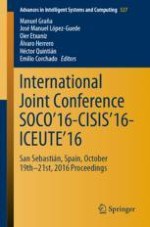2017 | OriginalPaper | Buchkapitel
Improvement in the Process of Designing a New Artificial Human Intervertebral Lumbar Disc Combining Soft Computing Techniques and the Finite Element Method
verfasst von : Rubén Lostado Lorza, Fátima Somovilla Gomez, Roberto Fernandez Martinez, Ruben Escribano Garcia, Marina Corral Bobadilla
Erschienen in: International Joint Conference SOCO’16-CISIS’16-ICEUTE’16
Aktivieren Sie unsere intelligente Suche, um passende Fachinhalte oder Patente zu finden.
Wählen Sie Textabschnitte aus um mit Künstlicher Intelligenz passenden Patente zu finden. powered by
Markieren Sie Textabschnitte, um KI-gestützt weitere passende Inhalte zu finden. powered by
